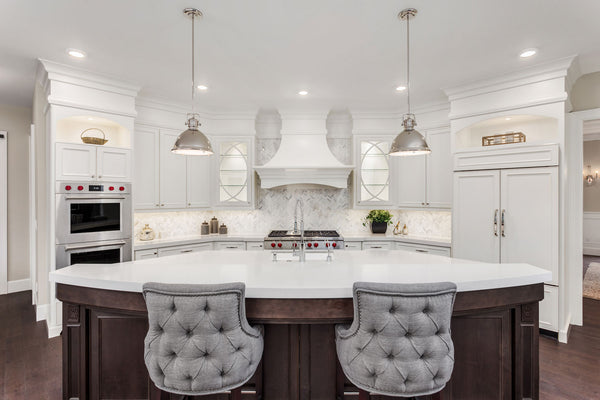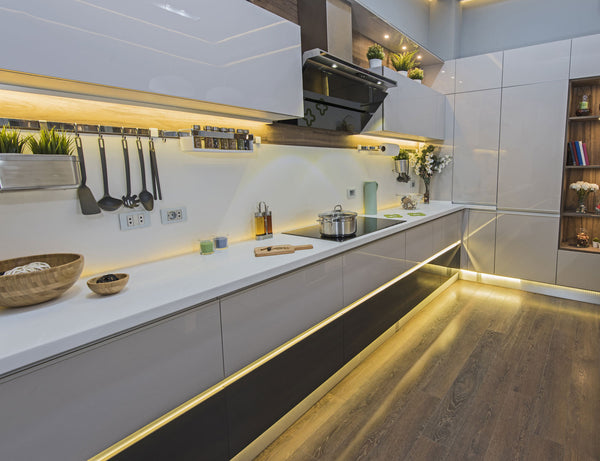On orders $99+
On orders $99+


The amount of light needed in a kitchen will vary depending on the size of the room and the tasks being performed there. Generally, kitchens require more light than other rooms in a house because they are often used for food preparation, cooking, and cleaning. A good rule of thumb is to aim for 50 to 75 watts of incandescent light per square foot of kitchen space. However, it is best to consult a lighting professional to determine the specific lighting needs for your kitchen.
Kitchen lighting is an essential aspect of any kitchen design. It not only illuminates the space, but it also sets the mood and can make the kitchen more functional. When it comes to kitchen lighting, there are several types of lights that are typically used, including task lighting, ambient lighting, accent lighting, and LED lights.
Task lighting is used to illuminate specific areas of the kitchen, such as the countertops, sink, and stove. These lights are typically bright and directed, and can be in the form of pendant lights, under-cabinet lights, or recessed lights. The main goal of task lighting is to make the food preparation and cooking tasks easier and safer.
Ambient lighting provides general illumination throughout the kitchen. This can be in the form of ceiling lights, such as a chandelier or flush mount, or wall-mounted sconces. This type of lighting helps to create a comfortable and inviting atmosphere in the kitchen.
Accent lighting is used to highlight specific areas of the kitchen, such as artwork or architectural features. Accent lights can be in the form of recessed lights, track lights, or picture lights. This type of lighting helps to create a focal point in the room and can also be used to draw attention to specific areas of the kitchen.

LED lights are energy efficient and long lasting, have a wide range of color temperatures, and are dimmable which makes them suitable for any type of lighting in the kitchen. They are also great for creating different ambiance in the kitchen.
When it comes to kitchen lighting, it is important to use a combination of different types of lights to create a well-balanced lighting scheme. An interior designer would typically implement these lights by creating a layered lighting plan. This would involve combining task lighting, ambient lighting, and accent lighting to create a functional and visually pleasing lighting scheme.
It is also important for the designer to consider factors such as the size of the room, the height of the ceiling, and the overall design aesthetic when implementing the lights in a kitchen. They may also consult with a lighting professional to ensure that the lighting plan meets the specific needs of the client.
In conclusion, kitchen lighting is an important aspect of any kitchen design. It not only illuminates the space but also sets the mood and makes the kitchen more functional. By using a combination of different types of lights, such as task lighting, ambient lighting, accent lighting, and LED lights, a well-balanced and functional lighting scheme can be created. It is important to work with a professional to ensure that the lighting plan meets the specific needs of your kitchen.
Helpful Links:
Leave a comment